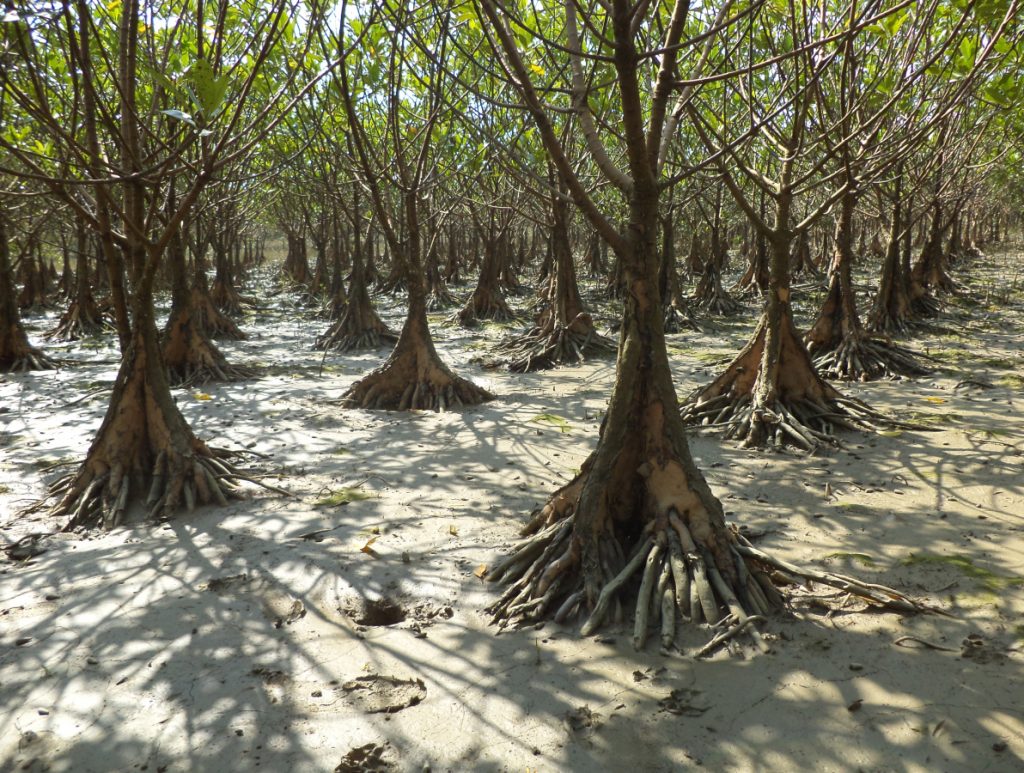Balasore: A man-made mangrove forest has turned out to be a deterrent against cyclones and tsunamis for scores of villages near Sartha river mouth on the Balasore coast, a report said.
According to the report, the mangrove forest has been generated over 25 hectares of land. Nearly, 4 lakh plants of 21 varieties of mangrove have been planted. This is not the work of the forest department.
A Delhi-based organisation Nabdanya has generated this forest with funds provided by an organization based in Germany.
Generation of mangrove plants has been successful by the efforts of environmentalist Dr Bandana Shiva and Balasore-based environmentalist Ashok Kumar Panigarhi.
Some local people have been engaged for maintenance of the forest. Significantly, two helpless women have become part of the team guarding the forest.
It is said that this mangrove forest plays host to many wildlife species in the area, apart from being instrumental in promoting local ecology, soil conservation, flood control, disaster resistance and giving a source of livelihood for some local people.
It is claimed that during the 1999 Super Cyclone, the impact of the disaster along the coast in Kendrapara was comparatively less due to mangrove forests.
Jagatsinghpur was worst affected by the cyclone in the absence of mangrove cover. Balasore coast was also badly affected by the Super Cyclone.
The fishing jetty and a village near Sartha river mouth were destroyed by the billowing waves. Dr Panigrahi thought of creating mangroves at Sartha river mouth and along Subarnarekha banks.
He sought help of the forest department, but no help came. Finally, a German-based organisation extended its helping hand to provide financial assistance. The Delhi-based organization also came forward to help.
After carrying out a survey on the presence of fluvial mud along the coast and river mouth, a suitable place was chosen for mangrove generation. Panigrahi also got approval of the panchayat for the project.
With the help of local people, Panigrahi started panting mangrove saplings at Sartha river mouth in 2006. 21 varieties of mangrove species were planted. But five species could not survive.
In next two years, 16 mangrove species mushroomed and it has spread over 75 hectares now. Seeds of mangroves are usually collected in August and September when sea water carries seeds ashore.
Some local youths were engaged to collect seeds. Locals said the mangrove has mitigated the severity of the cyclones that had taken place after 2013 in the area.
Ranindra Kumar Nayak, a researcher on mangroves, said that thick mangrove cover used to exist along coast of Balasore about 200 years ago, particularly near Chandipur.
Over years, it has vanished. Mangroves have survived at Talsari and Bichitrapur to some extent. There is a need for more mangroves like Sartha along the coast to protect people from natural disasters, Nayak said.
On the other hand, the state government has initiated efforts to create mangrove on vacant places along the coast. If local communities are roped into such exercise, mangroves can be generated along the coast, he noted.
PNN
